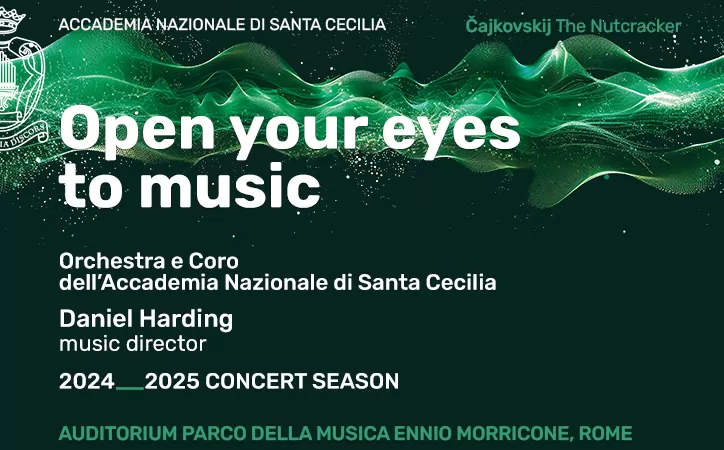The beautiful angel of the Roman Forum
The angelo bello (beautiful angel) that fascinated archaeologists and art historians during the first excavations, carried out at the church of S. Maria Antiqua in 1900, peeps out from behind the scaffolding screening the frescoed arch of the altar.
The fluid lines of the figure and the delicate shading of the cheekbones were in total contrast to the conventional notions of Byzantine and early mediaeval art. In fact, architect-archaeologist Giacomo Boni, who was in charge of the excavations, said it looked more like something out of the school of Raphael. There was no doubt, however, that it dated from the middle of the 7th century part of a great cycle of wall paintings spanning three centuries of early Christian art.
S. Maria Antiqua, the oldest Christian monument in the Roman Forum, has been closed to the public for almost 25 years, while extensive restoration work was being carried out. However, until 30 May visitors have a brief opportunity to see this unique monument and watch the skilled team of restorers at work.
The church, unfortunately, is in a bad way. According to Werner Schmid, one of the experts working on the present restoration project, 60 per cent of the murals and the original layer of plaster are now separated from the walls and risk crumbling away.
The last restoration of the paintings in situ dates from 1981-88, he explained. And that was followed up by more than ten years of maintenance work and repairs. The most urgent job now is to reduce the humidity, which is causing rapid deterioration.
The present project, initiated in October 2001 by Romes archaeological superintendence, has been financed by the Samuel H. Cress Foundation of New York, the World Monument Fund and the Norwegian Institute of Rome. However, the initial funding is now finished, and more money is urgently needed to carry on the work. The team estimates that it will need approximately another 1.2 million to complete essential preservation and restoration work by 2007, when the project should be completed. The decision to open the church to visitors during this delicate restoration phase is primarily, in fact, a fund-raising exercise. All money collected from entrance fees will go into the fund.
Maria Andaloro, head of the faculty of restoration at the Tuscia University in Viterbo, showed us round, recounting the fascinating story of the church. This is the oldest Christian monument in the Roman Forum, she said. It was adapted from what was probably the vestibule and guard room of the entrance to the imperial palace built by Domitian on the Palatine hill. The church itself dates from the mid-6th century. It was dedicated to the cult of the Virgin by a colony of Basilian monks, who fled from Byzantium in 552.
At that time, she went on, The Roman empire was in a state of collapse. Romes population had shrunk to something like 16,000. The forum was abandoned. People avoided it, because they believed it was populated by demons. When the church was consecrated here amongst the ruins of the old pagan temples it was meant to exorcise the false gods.
S. Maria Antiqua was abandoned in the 9th century, sealed under the rubble of the disastrous earthquake of 847.
In 1702, the presbytery was discovered by accident, during some digging work that was being carried out in what were then the gardens of the Sisters of St Mary Liberator. The wall paintings caused a sensation, and the pope ordered that the site be left open to public view for three months.
Originally, there were about 1,000 sqm of murals, covering the presbytery, side chapels and columns of the nave, painted between the 6th and 9th centuries. Some 250 sqm of frescoes and plastered areas survive, mostly in fragmentary form. The most famous and the most badly damaged is the palimpsest altar wall, decorated with seven different layers of paintings dating from different periods, and capped with a long inscription in Greek on a red background. Andaloro pointed out the figure of Mary enthroned, which comes from the oldest cycle and is the first known image of the Virgin Mary. The beautiful angel of the annunciation scene on the right-hand side is in sharp contrast with the surrounding stylised, abstract figures and it is easy to understand how it quite overthrew all concepts of early mediaeval art.
Another three layers of paintings were superimposed on the palimpsest between the 6th and 8th centuries. Various popes decided to renew the decor, Andaloro explained. The church was a monument to modernisation and it was also an official statement against the iconoclastic movement which swept the Byzantine world and led to the destruction of almost all religious Byzantine art.
For this reason, S. Maria Antiqua is considered especially precious. The cycle of wall paintings documenting the development of early Christian art is believed to be unique to Rome and the entire world, earning it the nickname the Sistine Chapel of the Middle Ages and justifying the large amount of money required to preserve it for future generations.
S. Maria Antiqua is open until 30 May. Guided visits only and for up to 25 people on Tuesdays, Thursdays, Saturdays and Sundays at 09.30, 10.30, 11.30 and (only for groups with previous booking) 12.30. For reservations tel. 0639967700, www.pierreci.it. Tickets cost 5 plus 1 booking fee.
Picture: For details of the beautiful angel see www.archeorm.art.beniculturali.it.





















